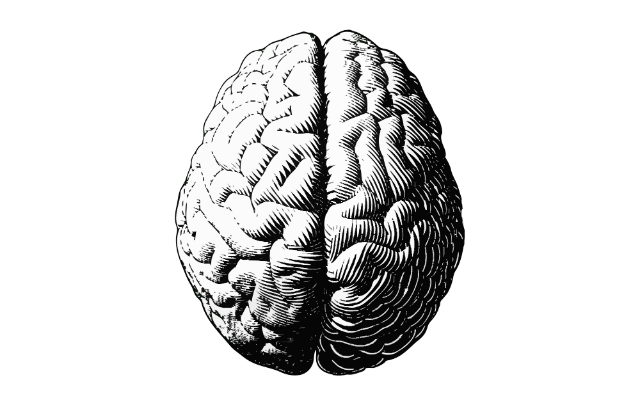
Dementia is one of the most feared diseases in the world. It is now incredibly rare to find someone whose life has not been touched by this disease, whether it is a parent, friend, sibling or spouse. The grief of losing someone with dementia often begins long before their death, with seeing a gradual loss of memory, changes in personality and sometimes distressing behaviours, so it is no wonder that dementia is now one of the most feared diseases in the world.
These are some of the most common questions I am asked about dementia:
What is dementia?
Dementia is a loss of cognitive function that leads to a decreased ability to perform day-to day-tasks. The symptom people often think of first is memory, particularly forming new memories and learning new things, but the earliest symptoms are often more subtle like apathy, loss of interest in previously enjoyed activities or disinhibition. Language can be affected with difficulty finding words or constructing sentances. There can also be a loss of the ability to navigate space, like getting lost on a previously familiar drive. Essentially dementia can affect any of the brain’s functions. Dementia is not the same as being occasionally forgetful, like losing your keys (things we all do), it is changes in cognition that actually impact function. Coming back from the supermarket and realising that you have forgetten to buy an ingredient for your signature cookies is unlikely to indicate dementia, but forgetting the steps and processes to make the cookies is more concerning.
What are the different diseases that cause dementia?
Dementia results from damage to the brain and can be caused by multiple different diseases which all have slightly different symptom profiles. These are some of the most common ones:
Alzheimer’s disease
Alzheimer’s disease occurs when there is a build up of amyloid plaques outside the cells in the brain and neurofibrillary tangles, or twisted fibres in the brain cells. This is associated with significant damage to brain cells and atrophy of parts of the brain, particularly the hippocampus, which is critical for forming new memories.
Vascular dementia
Vascular dementia occurs when there have been strokes, caused by blockages to blood vessels to the brain, that lead to brain damage. These strokes can be very small, so not noticeable at the time they occur, but lead to accumulated damage over many years. It commonly co-exists with Alzheimer’s disease.
Lewy Body Disease
Lewy body dementia is caused by the development of abnormal round, structures that build up in the brain. Lewy Body dementia is often associated with hallucinations, fluctuations in cognition and movement difficulties similar to Parkinson’s disease.
Others
Alzheimer’s disease and vascular dementia make up about 70% of all cases of dementia. Some of the less common diseases which cause dementia include:
-
Creutzfeld-Jacob disease, is a rapidly progressive dementia caused by prions, which is very rare.
-
Frontotemporal dementia, which affects the front and side sections of the brain, leading to loss of language and changes in personality, with memory often preserved until later in the disease course
-
Chronic traumatic encephalopathy occurs after repeated head injuries, it is also known as boxer’s dementia
How is dementia diagnosed?
Dementia is a clinical diagnosis, meaning that it is primarily based on history and examination. If you are concerned about your memory, or the memory of someone you love, the first step is to see your primary care physician. These symptoms can be caused by other conditions, like depression, hypothyroidism or low vitamin B12 levels, so it is important to rule these out. Your primary care physician may recommend a specialist, who will start by taking a detailed history. One of the key features of dementia is often a lack of awareness or insight into cognitive changes, so it is important that someone who knows the person well also attends this consultation. Brain imaging with MRI to look for any structural changes, such as atrophy or previous strokes can help to differentiate diagnoses. Brain imaging with positron electron tomography can show if there are areas of the brain that may appear to be structurally normal, but are not taking up glucose, which indicates that they are not active. Some centres are able to perform brain scans that measure the presence of amyloid in the brain, although further studies are needed before this can be used as part of routine care.
What is the prognosis for someone with dementia?
Most of the time dementia is a progressive and fatal disease, but diagnosis is not an immediate death sentence. People usually survive for 7-10 years after a diagnosis of dementia, and many people spend most of these years living at home with their families. In the very late stages of disease, the ability to swallow is affected, and so there is a very high risk of pneumonia, which is often fatal.
How common is dementia?
The good news is that although the absolute number of people with dementia is rising as the population ages, the risk of dementia per head of population is actually decreasing: in 2000 11.5% of people aged 65 and older were diagnosed with dementia, in 2012 this had dropped to 8.8%. As more people have the protection of a higher level of education and better control of cardiovascular risk factors like smoking and hypertension, has meant that you are less likely than previous generations to get dementia.
Despite many decades of research and multiple drug trials, sadly we still do not have any treatments that can alter the progression of dementia, but there are many studies that have shown that there are lifestyle changes that can significantly decrease the risk of dementia.
For the latest evidence on prevention of dementia, you can read my second article in this series.
First published on Sixty & Me